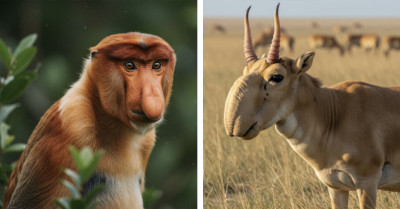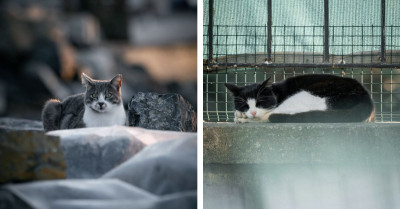A Mighty Mix Of Colors In Such A Tiny Body – Meet The Cuban Tody
The Cuban Tody is a small bird that packs a lot of punch into its tiny body. It's about the size of a small hummingbird.
This tiny, short-tailed bird has a large head and a vivid leaf-green back that quickly transforms into a geranium-red throat. If that weren't enough, it also has a smidgen of blue on each cheek. Additionally, it possesses a long bill specifically designed for collecting insects.
Todies can be found foraging for insects across the forests of Cuba. As they pursue their prey, their wings produce an unmistakable whirring sound. Even if you can't see one, you can track it down by listening.
The Cuban Tody is a year-round resident of Cuba and the islands off its coast. Based on song variety, the species appears to be divided into two populations: one for eastern Cuba and one for western Cuba.
Like many other resident Cuban bird species, the Tody is a habitat generalist.
Dry lowlands, evergreen forests, coastal vegetation, and areas near streams and rivers are all known habitats.
They are often seen in pairs. When perched, they sometimes repeat a peculiar short "tot-tot-tot-tot," but their most characteristic call is a soft "pprreeee-pprreeee" (which is the origin of its Cuban common name, 'Pedorrera'). Their wings produce a whirring sound that is used during display flights.
The Cuban Tody is a year-round resident of portions of Cuba and the islands just off the Cuban coast

Small in size (4.3 inches, 0.21 oz), with a large head compared to its body size and a thin, flat bill, this species stands out. The color of the Cuban Tody is similar to that of other todies, featuring an iridescent green dorsum, pale whitish-grey underparts, and red accents.
Pink flanks, a red throat, yellow lores, and a blue ear patch characterize this species. The bill is bicolored, with a black top and a red bottom.
It is known to live in dry lowlands, evergreen forests, coastal vegetation, and near streams and rivers

Insects make up the bulk of the Cuban Tody's diet, but small fruits, small lizards, and spiders are also common. Although little is known about these birds' ecology, they have been observed in mixed-species flocks.
They are also prey for predators such as mongooses and humans in impoverished areas.
Nests consist of a tunnel about 12 inches long in a clay embankment, although sometimes they use a rotten trunk or tree cavity.

They build nests in clay embankments, although sometimes they utilize a rotten trunk or tree cavity. They cover the tunnel walls and the egg chamber with a thick, glue-like substance mixed with grass, lichen, algae, small feathers, and other materials.
They lay three or four eggs, and both parents incubate them.
They lay three to four eggs, and they are incubated by both parents

Watch them on video here:
The West Indies is not just about beaches. These delightful birds are wonderful beings you can encounter there.
If you want to see them in person, you can find them in the Greater Antilles, Cuba, Jamaica, Puerto Rico, and Hispaniola. They are worth the trip.



